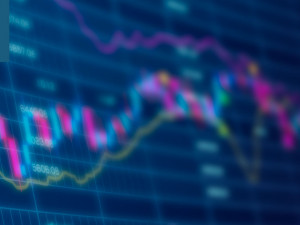
Covid confidence collapses
Morning mid-market rates – The majors
3rd August: Highlights
- Too soon to predict a correction
- Easy to have record growth after a 33% contraction
- Eurozone contract by 12.1% in Q2
Little can be done to avert a second spike
Those hopes have been dashed somewhat by the cloud of a second spike that has appeared seemingly out of nowhere to drive the Government to touch the brake a little in lifting the lockdown any further.
It emerged on Friday that the Scientific Experts believe that the UK has reached the limit of its ability to move any further. That may mean a trade-off where, for example, in order for schools to reopen, pubs and or restaurants may need to close.
The Chancellor will have to be hard at work redrawing his priorities as his eat out to help out campaign starts but employers are having to pay a greater contribution to the wages of salaried staff.
There have been restrictions reintroduced to try to deal with flare-ups in several regions in the north of England and Prime Minister Boris Johnson has said he will not flinch from making tough decisions to keep the country safe. The main opposition parties have agreed with the sentiment but have queried the methods he has used.
The pound had a good week last week as the aftereffects of BoE Chief Economist Andy Haldane’s V-shaped recovery message continued to reverberate. There may be some playing down of that message in the coming days/weeks should the second wave take hold.
It rallied to a high of 1.3176, not seen since early March, driven by its own factors as well as the continued weakness of the dollar. On Friday is closed virtually unchanged on the day at 1.3086.
Considering your next transfer? Log in to compare live quotes today.
Relief deal not close
President Trump or at least his closest aides want to make sure that the President squeezes every ounce of benefit for his re-election campaign from the deal.
Adding various in work benefits, significantly reducing the core value, and shortening the term are all probable demands from the Administration while Congress Democrats want a decision made quickly to avoid any additional human disaster.
As the mean expectation for the length of the downturn continues to lengthen there is a growing fear that it may be used to determine that a lower amount over a probable longer period may be more beneficial. In Trump’s mind that will provide better value since, were there to be a major improvement it could be curtailed having paid out less.
While it is the American Way, to seek employment, those States staunchly supporting the President will support less welfare and more infrastructure investment. Although that may be a long-term solution, employment is barely improving in the short term.
Last week’s report on weekly jobless claims showed initial claims have plateaued at around 1.4 million while continuing claims jumped by close to a million in the latest week.
This means that despite the NFP data being a significant driver every month, the July figures will be even more significant when they are released this Friday.
Average expectations for the July numbers are for around 1.5 million jobs to have been added, down from a reported 4.5 million in June. Any correction to the June number could also be significant.
Last week, the dollar’s fall slowed a little despite it making multi-year lows. It reached 92.54 but rallied on Friday to close at 93.44.
-12.9%. Good news or bad?
Q2 GDP contracted by 12.9%. It is difficult to equate the figures against each other given the significant differences in the make of the economies.
Suffice to say that the Eurozone is suffering equally as badly as the rest of the world’s industrialized nations.
GDP is of course a rear-view mirror indicator. It is always the next quarter that means so much more and this is now particularly prescient.
Q3 was supposed to be the quarter where a recovery was due to start but with two of the four (UK and Eurozone) witnessing a second spike, Japan coming out of theirs and the situation in the U.S. blurred between first and second it may be the end of the year before the fog clears.
Inflation is still rising albeit slightly and this will probably preclude the ECB from entering further into negative rate territory.
It is hard to say where the Eurozone is suffering worst; its new instructions to banks will curb activity, the continued concerns over just how much of the relief fund is made up of new money which could see its effect diluted and, of course, there may be a closing of borders should a second wave roll across Europe.
The euro was very strong last week as the market celebrated the belated yet hard won agreement over the relief fund.
It rose to a high of 1.1908 but fell back to close at 1.1777. This was below Thursday’s close which may prove to be significant.

About Alan Hill
Alan has been involved in the FX market for more than 25 years and brings a wealth of experience to his content. His knowledge has been gained while trading through some of the most volatile periods of recent history. His commentary relies on an understanding of past events and how they will affect future market performance.”



